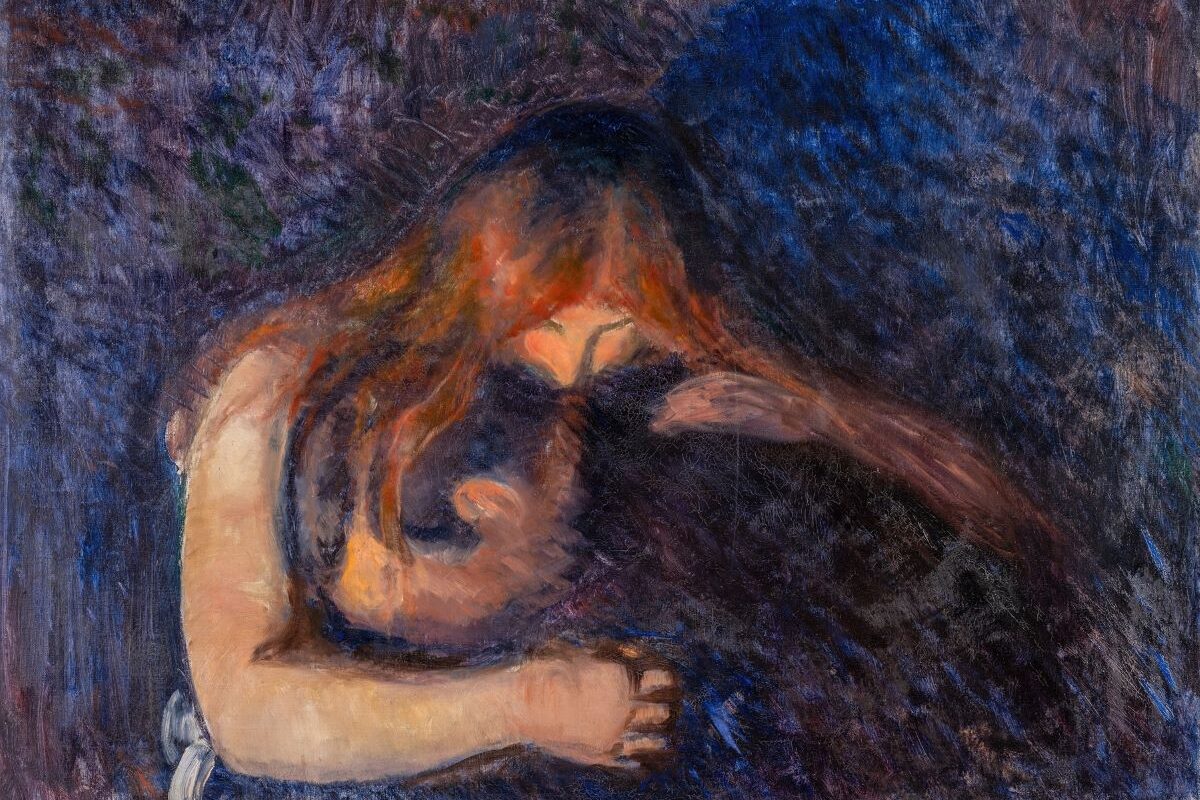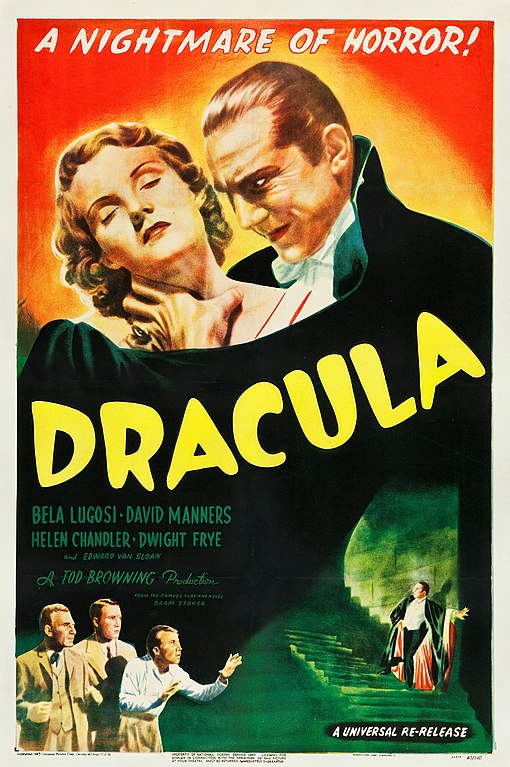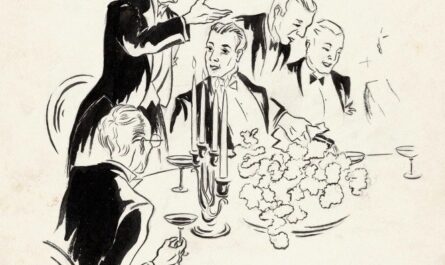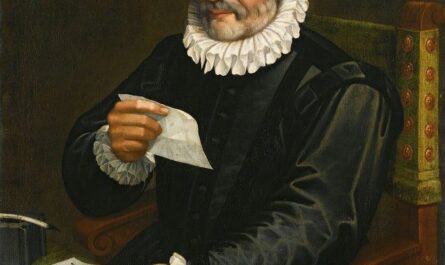Dracula is a Gothic novel published by Irish novelist Bram Stoker in 1897. The U.S. edition appeared in 1899. Stoker published eighteen books, including ten novels, as well as dozens of articles, essays, and reviews. Interestingly, he was famous during his lifetime for being the agent and theater manager for England’s Shakespearean great, Henry Irving. Today however, Dracula is undoubtedly Stoker’s claim to fame, having never gone out of print and in translation in more than thirty languages.
“A familiar sight for New Yorkers”
Abraham “Bram” Stoker was born 8 November 1847 in Dublin, the third of seven children. He was privately tutored then attended Trinity College in Dublin, where he earned his BA in 1870 and received his MA in 1875. In 1878, he married Florence Balcombe, and accepted a position as Henry Irving’s personal secretary the same year.
It is safe to say Stoker was famous well before Dracula was published – not as a writer, but as Irving’s manager. Henry Irving was considered the greatest actor of the time and owned London’s Lyceum theater, which Stoker managed. Many of his interviews were on account of his being Irving’s business manager. The few interviews Stoker did give about his writing all introduced him as a fixture in the theater world, frequently in New York City on business with Irving; a “familiar sight for New Yorkers,” as one paper put it. When Irving died, Stoker wrote 1about his time with the acting legend, his Personal Reminiscences of Henry Irving. After Irving’s death, Stoker took a position at London’s Daily Telegraph, where he wrote reviews full time.
I find Stoker’s career as a ‘working writer’ interesting. He wrote widely, publishing fiction, non-fiction, reviews, and articles. Today he is remembered quite differently than he was regarded during his lifetime – and that was only a century ago! Funny enough, while researching this piece I had to look into Henry Irving’s fame 2to get an idea of how famous the thespian was, to then appreciate how famous Stoker was at the time. What might be the legacy of Dracula and Stoker in another hundred years?
Dracula Appears
When Dracula first appeared in print in 1897, the story was simply another book for the Irish author. He had already published seven novels, making Dracula number eight of his ten novels. His fiction deals with themes of romance, adventure, and the later novels, including Dracula, incorporate supernatural elements. Several novels look at questions concerning feminism and national identity. Other stories examine old myths and legends from Europe as well as Egypt. Stoker included Gothic elements in several, but not all, of his novels; for example, many take place in the classic Gothic setting of castles. Travel and adventure are also central elements in most of his fiction.
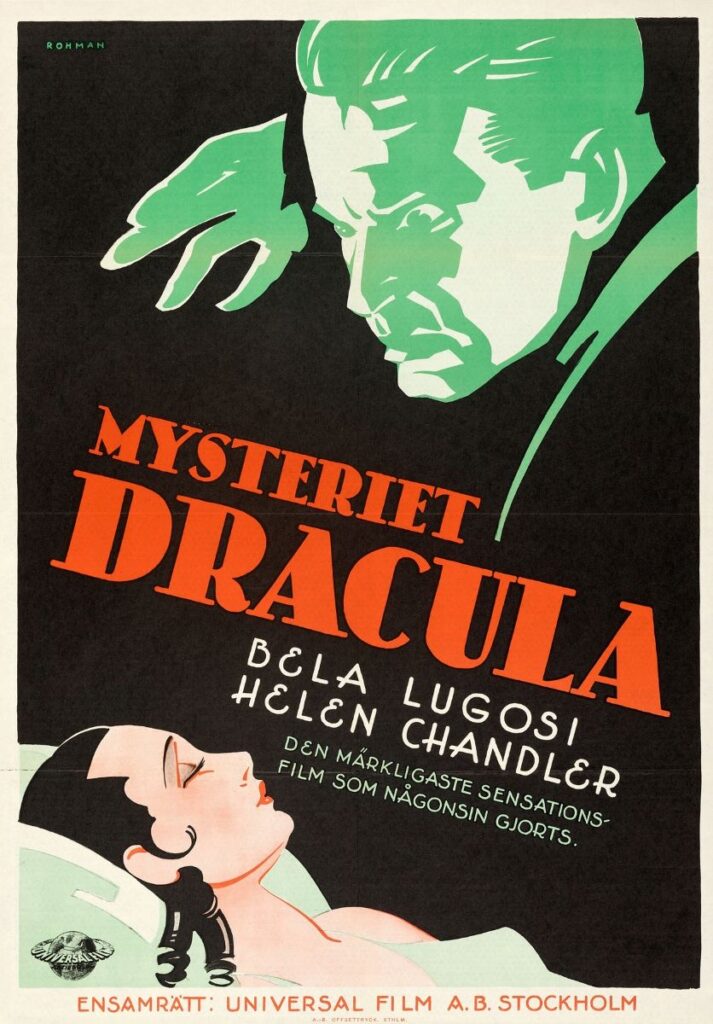
In regards to the publication of Dracula, the difference between perception today and the initial reception upon publication is stunning. The story at the time was simply another successful book for a working author. This makes Stoker’s story even more interesting, because we’re talking about a novel that didn’t cause much of a stir upon release, yet has cemented its place in the horror canon over time, in just a bit over a century. It truly has taken on a life of its own! Dracula has never been out of print, and certainly doesn’t show any signs of slowing down.
The story first appeared in 1897 as a critical success; well-regarded, but not a smash. Some reviewers focused on the wholesomeness of the story. The Hampshire Advertiser, among others, complimented the use of medieval legend and superstition as the story’s backdrop. The British Weekly commented, “The strange thing is that, although in some respects this is a gruesome book, it leaves on the mind an entirely wholesome impression.”
The Glasgow Heath seemed to have a lovely time all around.
“It is an eerie and gruesome tale which Mr. Stoker tells, but it is much the best book he has written. The reader is held with a spell similar to that of Wilkie Collins’s “Moonstone,” and indeed in many ways the form of narrative by diaries and letters and extracts from newspapers neatly fitted into each other recalls Wilkie Collins’s style…. Mr. Stoker keeps his devilry well in hand, if such an expression is allowable; as strange event follows strange event, the narrative might in less skilful hands become intolerably improbable; but “Dracula” to the end seems only too reasonably and sanely possible. Henceforth we shall wreathe ourselves in garlic when opportunity offers, and firmly decline all invitations to visit out-of-the-way clients in castles in the South-East of Europe. “Dracula” is a first rate book of adventure (Glasgow Herald, 10 June 1897).”
However, while comparatively tame by today’s standards, The Guardian thought it contained too much horror.
A writer who attempts in the nineteenth century to rehabilitate the ancient legends of the were-wolf and the vampire has set himself a formidable task. Most of the delightful old superstitions of the past have an unhappy way of appearing limp and sickly in the glare of a later day, and in such a story as Dracula, by Bram Stoker (Archibald Constable and Co., Svo, pp. 390, 6s.), the reader must reluctantly acknowledge that the region for horrors has shifted its ground. Man is no longer in dread of the monstrous and the unnatural, and although Mr. Stoker has tackled his gruesome subject with enthusiasm, the effect is more often grotesque than terrible. The Transylvanian site of Castle Dracula is skilfully chosen, and the picturesque region is well described. Count Dracula himself has been in his day a medieval noble, who, by reason of his “vampire” qualities, is unable to die properly, but from century to century resuscitates his life of the “Un-Dead,” as the author terms it, by nightly draughts of blood from the throats of living victims, with the appalling consequence that those once so bitten must become vampires in their turn. The story is too complicated for reproduction, but it says no little for the author’s powers that in spite of its absurdities the reader can follow the story with interest to the end. It is, however, an artistic mistake to fill a whole volume with horrors. A touch of the mysterious, the terrible, or the supernatural is infinitely more effective and credible.
Interestingly, the book did not cement Stoker’s legacy as a master of horror until well after his death, nor did sales run away until after his death, either.
Dracula Endures
While vampire stories had appeared before, nothing captured the imagination quite like Stoker’s treatment. Dracula was published stateside in 1899 – and the Bela Lugosi film premiered in 1931 to smashing success. Numerous stage adaptations were produced in both the U.S., where Lugosi reprised the role of the Count multiple times, and in the U.K., where Stoker staged productions to protect his copyright. In addition to more than a dozen feature films, the Dracula character has appeared in comic books and ballet productions, on children’s breakfast cereal boxes, in television miniseries and cartoons, and of course, in dozens of books. A story published and reviewed as “fine” a century ago has managed to take on its own legend, created its own genre, and even inspired its own scholarly journal, The Journal of Dracula Studies published annually by Pennsylvania’s Kutztown University. All of this, despite the fact most people remain unfamiliar with the novel launching the legend. Dracula has truly transcended his origins!
What is it about Dracula, the book, that is so captivating? From the very first time I read it, I was absolutely on the edge of my seat because of the dreadful tension maintained throughout the story. It’s incredible to have a villain only show up in the very beginning and the very end, yet still maintain a presence throughout the story. I’ve not come across another story so effective in that regard. The choice to present the story in an epistolary manner, through letters, diary entries, and newspaper clippings in a chronological order, makes the action feel immediate. Dracula draws on the deepest parts of the human experience; fear, love, faith, the unknown, and, by incorporating historic legends into the Dracula’s back-story, the entire novel takes on a chilling effect. It’s not that any single scene in the story feels necessarily “real,” but the concept of Something coming into your family undetected and wreaking havoc remains terrifyingly tangible throughout. Just a few years later, G.K. Chesterton would write that the aim of the fairy tale is to teach children dragons can be beaten. Here, that Something can also be beaten.
The vampire enduring as such a ubiquitous figure today is a testament to Stoker’s chilling story; the result of his bringing together so many legends from across Europe and getting at the creepiest aspects of this myth of the Undead. Dracula has endured for more than a century, popping up in unexpected places and in stories with unique twists on the legend. But, perhaps the most surprising part of all is that Stoker published another version of the Dracula story in Iceland. Its existence – and major departures from the familiar story of Dracula – was only discovered stateside in the last twenty years! We will dive into that story in the second part of this Dracula essay.
Featured Image: The Vampire. Munch, Edvard. 1893.
- It was this memoir which was regarded as Stoker’s major literary contribution and the only book mentioned in Stoker’s obituary. Of course, now, that book is all but forgotten and today we look at it as a biography written by the author of Dracula. ↩︎
- In 1880, Irving invited Edwin Booth to costar and the two alternated the roles of Othello and Iago, which was a sensational success. Irving made Booth a star internationally. Interestingly, Edwin Booth, actor, was the brother of John Wilkes Booth, the actor who had assassinated President Lincoln in April 1865. The Wilkes family was already famous because of their thespian father; the Booths grew infamous with John Wilkes’ actions. However, Edwin continued acting and years later, gained international esteem after Irving’s invitation to London. ↩︎

